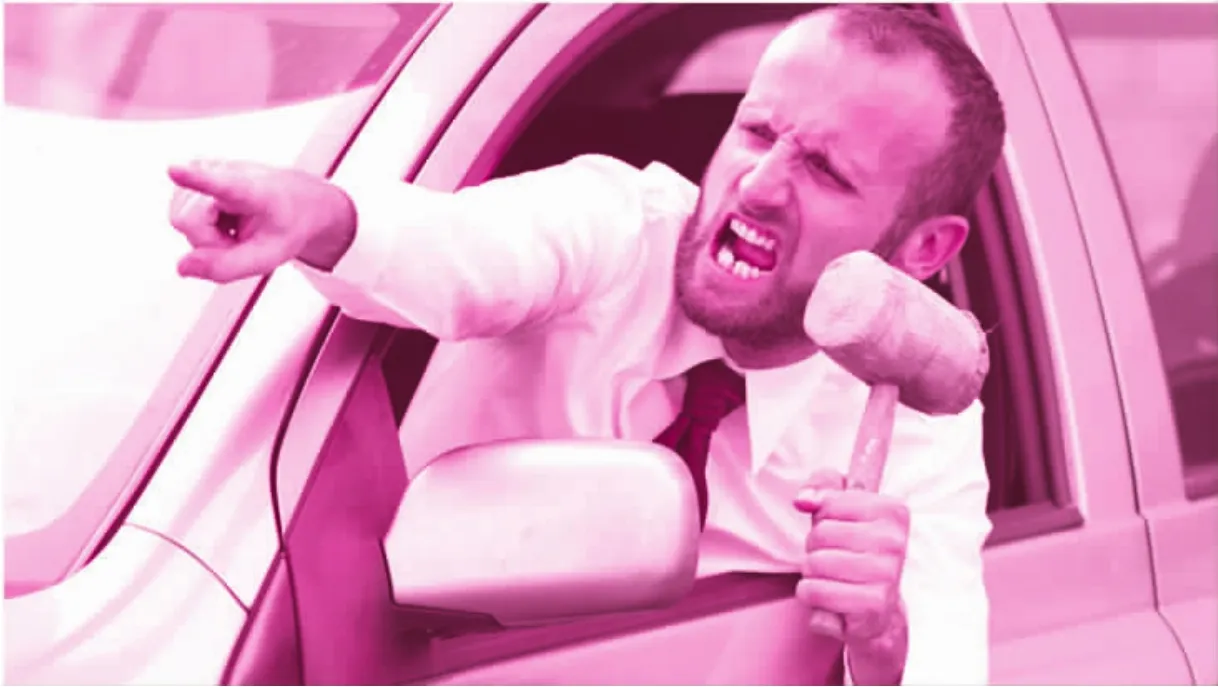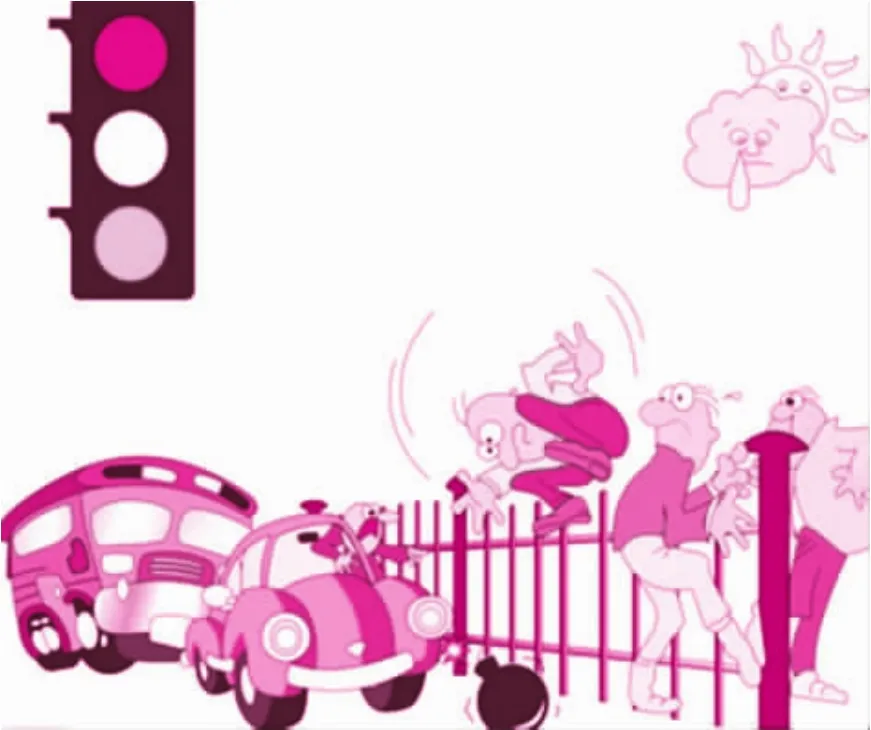
精彩导读
随着生活节奏的加快,“路怒症”这一社会疾病也日趋严重。在路上驾驶的人们很容易产生矛盾,发生冲突。然而,本文中的两位“狭路相逢”,由最初的互不礼让到最终成功克服“路怒症”,他们之间到底发生了怎样的故事呢?

题材 体裁 文章词数 难度 建议用时人与社会 记叙文 549 ★★★ 11分钟
Tonight,on my way home,a car cut me off.I turned my bright lights on him and I drove right behind him.At the next stop light,Ipulled upbeside him.He was angry,and Igave him the birdas he seemed to shout rudely at me.
I rolled down my window and said,“Really?You're mad at me when YOU cut me off?”He answered,“YES!” and then threw his coffee in my face!
It covered my face,my car,and my steering(转向装置)wheel.Thankfully,it was cold.I was angry,so I followed behind him with my bright lights on.
I called 911 to report an attack by a taxi driver.A very nice and calm operator answered.She told me not to follow him since I could get hurt.She told me to give her the license plate number and type of car,and they would follow up.
Something in me rethought the whole experience.I told the 911 operator that I changed my mind.I did not want the police involved after all.“I am fine,” I told her before hanging up.
The car turned down a narrow roadquickly,trying to lose me,but I followed patiently.The car pulled over to the right,and a youngish man got out.He didn't look so mean or scary actually—more sad,really.I sensed I didn't have to worry and I wasn't afraid.
I pulled over to the left side ahead of him and got out of my car.I shouted at him,“Really?You are going to throw your coffee on me?”He tried toreason with meas he was approaching.
“Stay back,”I yelled out. “I won't hurt you,”he replied.I could tell that he meant it.I started to sob.He was walking toward me,kindly.
“Please don't cry,” he said,“I should not have thrown my ice coffee on you.This is my second job today,I am just delivering pizzas—that's what I do.I am in a rush,like everyone else.”

“This is not who I am.I am not this guy,”he added.
“I believe you,” I said, “I am sorry,” I said through my tears.
“It has been a hard day.I am not a bad guy,” he said. “I am not a bad woman.I am sorry,too.This is not my way,” I said.“It is not my way either,”he said.
“Please wait here,”he said as he went back to his car to get a towel.He also brought a bottle of water.“Please drink,” he said,“It will make you feel better.”Then,he began to clean my jacket and my car.
“This is not who I am,” he repeated. “I have a son,I am working two jobs,I am just trying to do my best.I am not this person you think I am.”
“I am not this person either,” I said.As if to start over,I ased,“My name is Mia.What is your name?”“Mohammed.”“I am sorry this happened,Mohammed.”“Me too,” he said.
We both hugged,apologizing to each other.These are turbulent(混乱的)times for our world. “I don't want to add to the darkness,”I told him.“Me too,”he said.
Reading check
Read the text and answer the questions.
1.Why did the author call 911?
2.Why did the author change the mind at last?
3.Driving etiquette plays an important role in driving.What should be done to deal with road rage and improve driving etiquette?
Language study
Difficult sentences
1.The car turned down an alley quickly,trying to lose me,but I followed persistently.
翻译:____________________________________
【点石成金】本句是由but连接的两个并列句。句中,现在分词trying to lose me作目的状语从句。
2.I should not have thrown my ice coffee on you.
翻译:__________________________
【点石成金】本句考察虚拟语气。句中should not have done表示 “不应该做某事而做了”。
Using language
Ⅰ.Important phrases in the text
pull up停下来
give sb the bird嘲笑某人
reason with sb 与某人理论;规劝某人
yell out叫喊;吼叫
Ⅱ.Complete the following sentences in correct forms with the phrases given above.
1.The cab_____________________and the driver jumped out.
2.To__________________the boss,Mr Green has been waiting for the whole afternoon at the office door.
3.It makes her relaxed that no one in the class________________.
4.The child___________________in pain.
Cultural background
Driving etiquette
驾驶礼仪
Driving etiquette relates to the general courtesy (礼貌)rules which people expect the operators of vehicles to follow while they are driving.The use of the term dates back to the early 1900s and the use ofhorse-drawn carriages. Good driving etiquette typically involves being polite and staying alert(警惕的)which varies by vehicle,situation,and location involves different rules.The general guiding principle behind driver etiquette is “one good turn deserves another”.It is considered vital that everyone observes good driving etiquette.Speeding and aggressive driving,both examples of poor driving etiquette,have been cited as negative factors related to highways.Drivers need education aboutdriving etiquette to prevent them getting into accidents.

驾驶礼仪是指人们希望车辆操作人员在驾驶过程中应遵守的一般礼节。这个词的使用可以追溯到20世纪初对马车的使用上。良好的驾驶礼仪通常包括保持礼貌和保持警惕,而这在不同的车辆、情况和地点涉及不同的规则。驾驶礼仪背后的一般指导原则是“礼尚往来”。每个人都必须遵守良好的驾驶礼仪,这被认为是十分重要的。超速驾驶和咄咄逼人的驾驶都是缺乏驾驶礼仪的例子,都被认为是与公路相关的负面因素。司机需要有关驾驶礼仪的教育,以防止他们发生事故。



